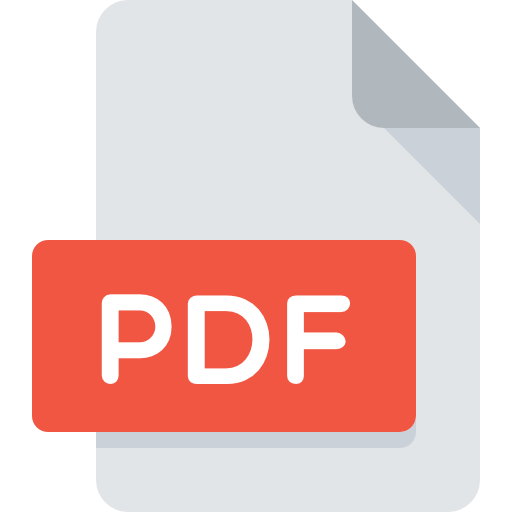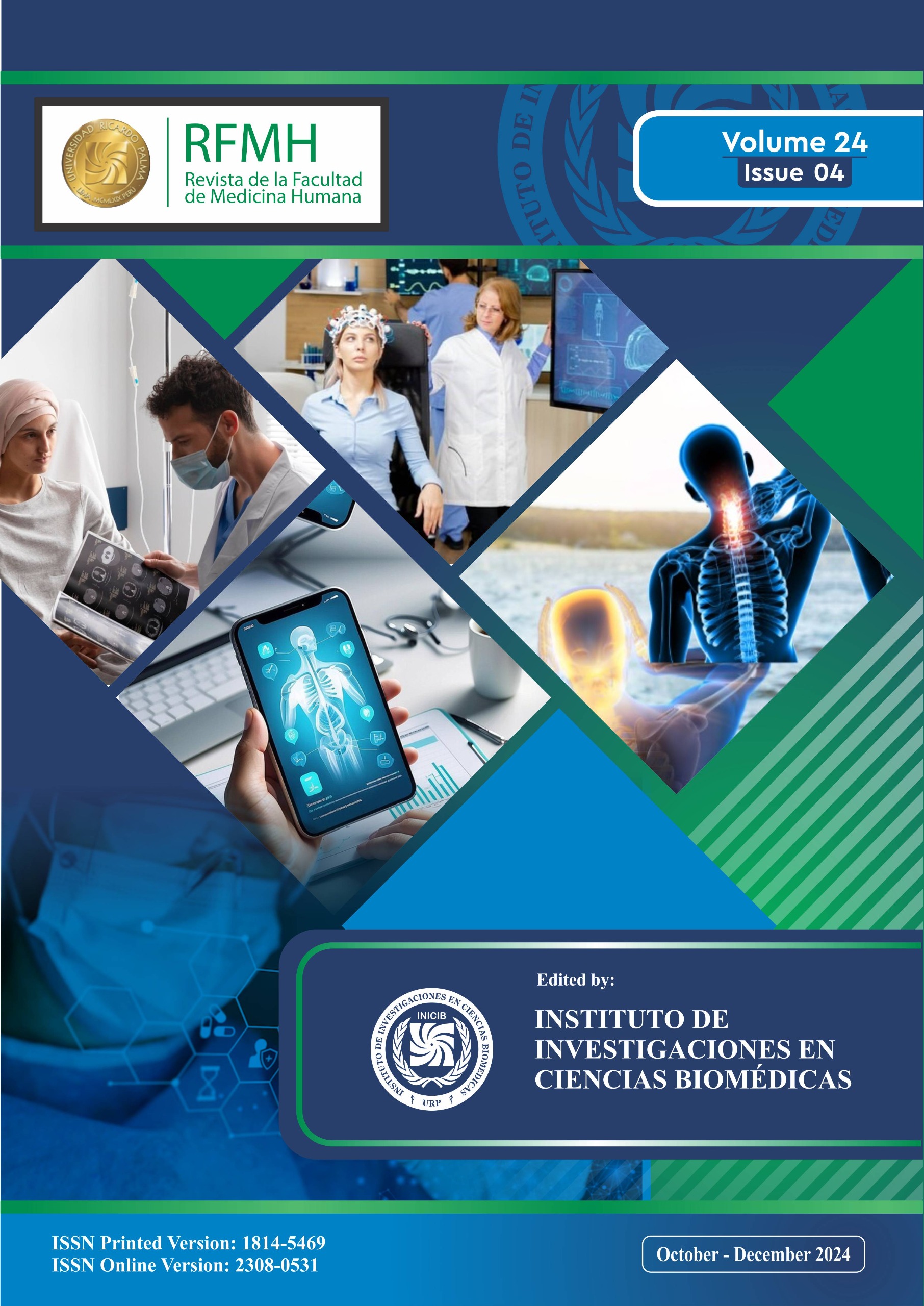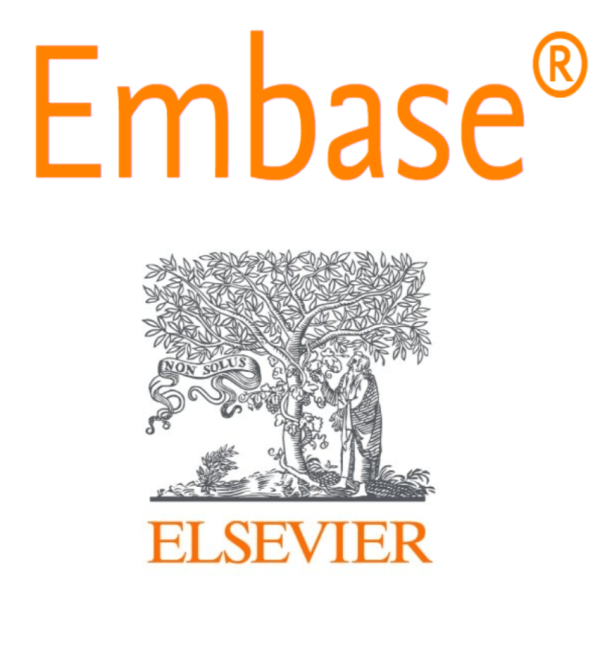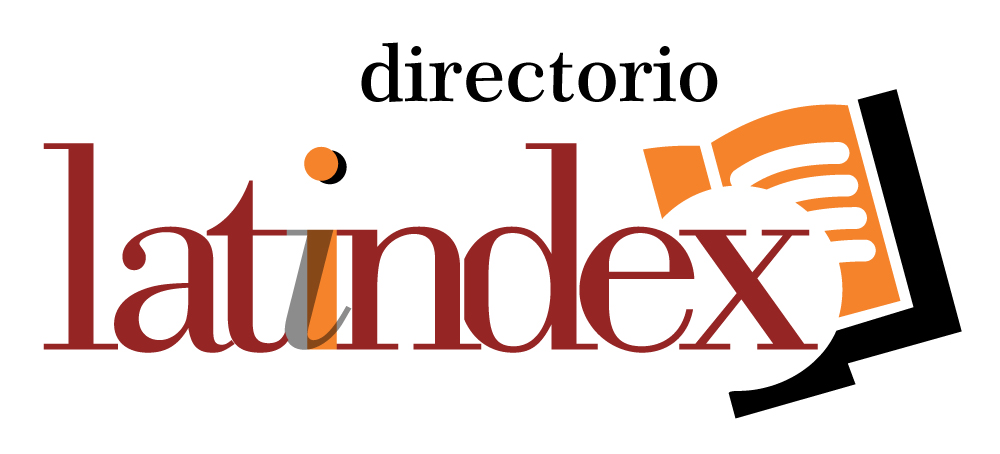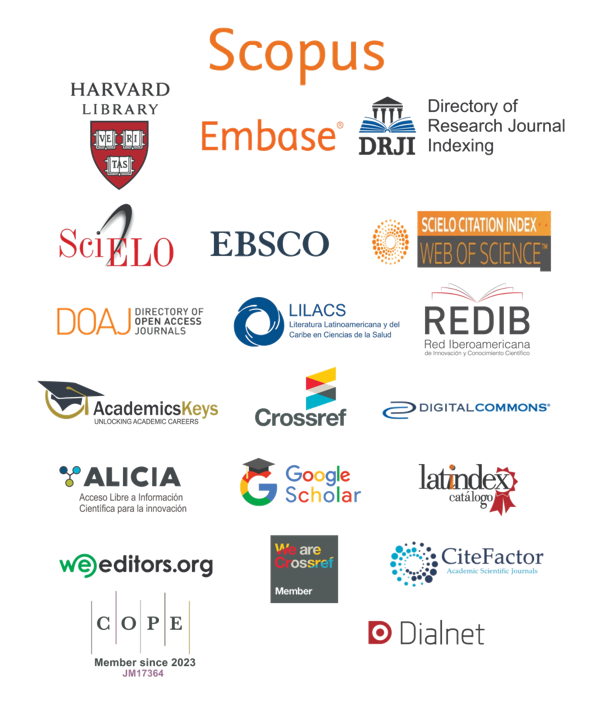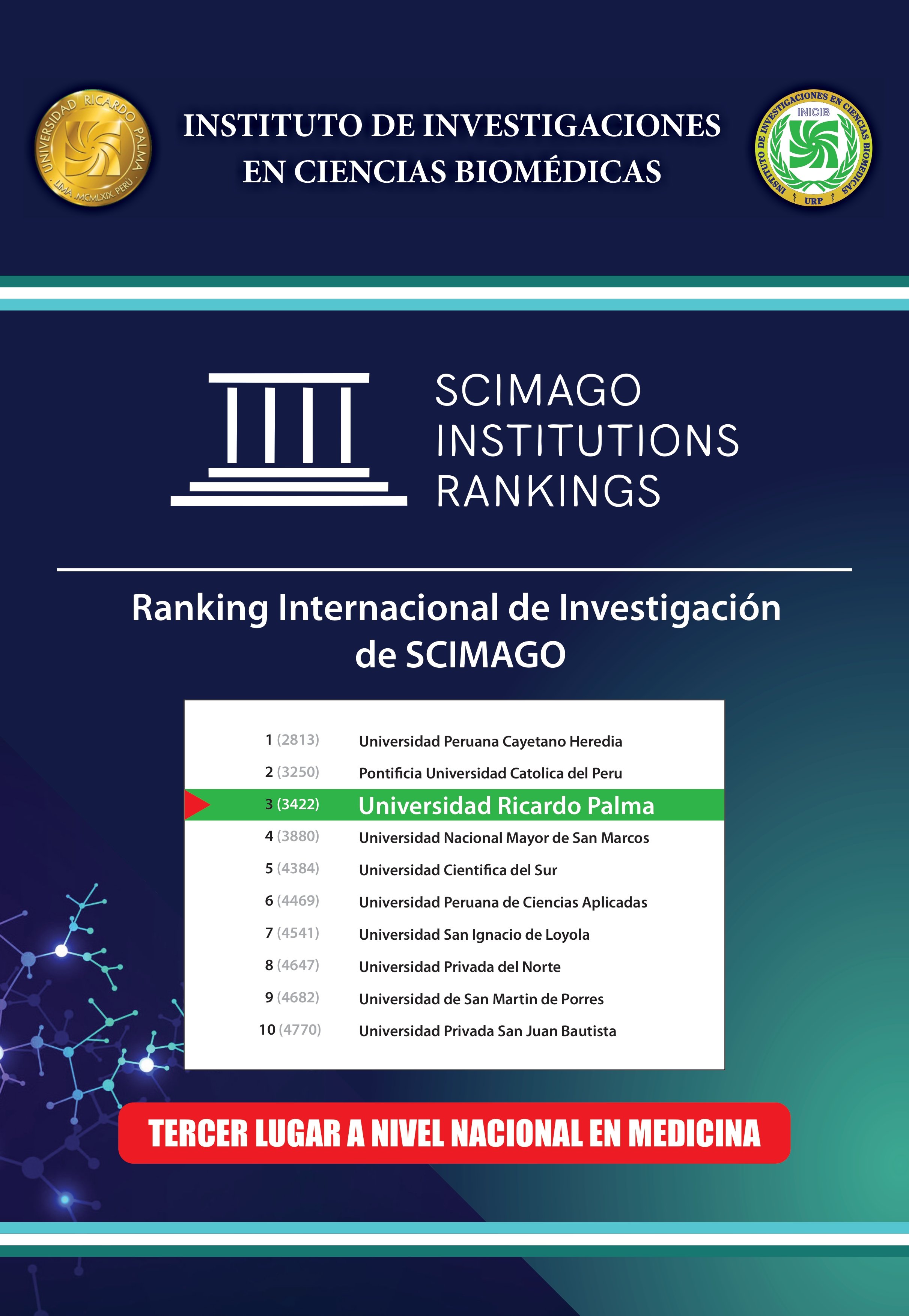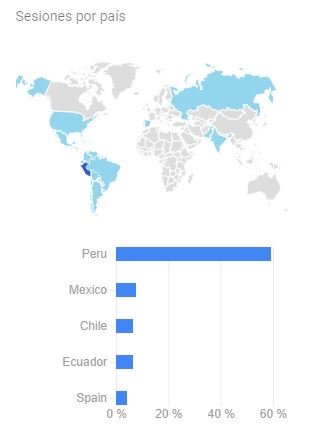Guidelines
Instructions To Authors
Updated on March 23, 2022. These norms go into effect on the 3rd number of volume 22 in the year 2022.
General Norms
The Journal of Human Medicine Ricardo Palma University (http://revistas.urp.edu.pe/index.php/RFMH) is a quarterly scientific journal that publishes original articles in Spanish and English and will consider articles that are related to public health, surgery, clinical sciences and basic sciences, for publication. Said works must be unedited and unpublished in the past. They should also not be sent simultaneously to other scientific journals.
Once the final draft has been accepted. The Editorial Committee reserves the right to edit the manuscripts submitted with the purpose of optimizing the quality of writing, style and format of the journals.
Ricardo Palma University Journal of Human Medicine adheres to the recommendations offered by the International Committee of Medical Journal (ICMJE) (http://www.icmje.org). Once the final draft has been accepted. The editorial committee reserves the right to edit the manuscript with the purpose of optimizing the quality of writing, style, and format of the article.
Resources
Your manuscript must be sent along with the documents indicated below. You can download the formats from the following sites:
- Affidavit Format.
- ICMJE’s Conflict of Interest Declaration Form (1 per author).
- Cover letter.
- Informative first page.
Authors are recommended to use the following guidelines to improve the presentation of their manuscripts:
- Human research: Declaration of Helsinki revised in 2013
- Observational studies: directrices STROBE
- Estudios observacionales: STROBE (combined)
- Observational studies (cohort): STROBE (cohort)
- Observational studies (case-control): STROBE (case-control)
- Observational studies (analytical cross-sectional): STROBE (analytical cross-sectional)
- Systematic reviews and meta-analyses: PRISMA guidelines
- Case reports: CARE guidelines CARE
- Clinical trials: CONSORT
- Animal studies: ARRIVE
- Diagnostic studies: STARD
You can review additional guidelines according to the type of manuscript to be submitted, at https://www.equator-network.org/reporting-guidelines/
Sex and gender
Ricardo Palma University Journal of Human Medicine has adopted the recommended guidelines developed by the European Association of Science Editors (EASE) used to maintain Sex and Gender Equity in Research (SAGER Guidelines). The guidelines apply to both original research articles as well as articles that are up for review. The SAGER guidelines aim to improve sex and gender equity in research, thus contributing to the integrity of a research article, and increasing its performance. The recommendation is to report information on sex and gender in the study design, data analysis, results and throughout the interpretation of the findings. The recommendations and guidelines can be found on the Equator’s website: http://www.equator-network.org/reporting-guidelines/sager-guidelines/
Please consult the recommendation guidelines before submitting your manuscript as they will be considered when reviewing your publication. This can be found at: (https://researchintegrityjournal.biomedcentral.com/articles/10.1186/s41073-016-0007-6).
Open Access
The Journal of Human Medicine from Ricardo Palma University is open access: all articles can be accessed immediately and will remain permanently accessible to facilitate its reading and downloading. Permitted reproduction is defined under the following Creative Common Use License: Creative Commons Attribution 4.0 International (CC BY 4.0). This means that copying, editing, transforming, and building on top of current work is allowed for any purpose.
This is an open access journal under the CC BY 4.0 license: https://creativecommons.org/licenses/by/4.0/
Types of studies
Articles published in the Journal of the Faculty of Human Medicine can refer to any of the following subject areas:
- PUBLIC HEALTH
- CLINICAL SCIENCES
- SURGICAL SCIENCES
- BASIC SCIENCES
- MEDICAL EDUCATION
- RESEARCH / INNOVATION IN MEDICINE
- HEALTH ECONOMICS
Articles can belong to one of the following categories: Editorial; Original Articles; Short Reports; Review Articles; Special Section; Symposium; Historical tribute article; Case Report; Photo Gallery and Letters to the Editor. Research studies may be presented at the author’s initiative, by petition or at the request of the Editorial Committee of the magazine. Systematic reviews with or without meta-analysis will be considered in the Original Articles section.
Sending or Submitting Articles
Manuscripts, in Spanish or English, must be submitted electronically through the editorial management system, which can be found at the following website: http://revistas.urp.edu.pe/index.php/RFMH/about/submissions,The author will be able to find all the information needed to submit (see video tutorial: https://youtu.be/2DBnO69J3LQ). The use of this resource will allow you to track the status of the manuscript. In case you were to have difficulty submitting articles through this platform, you can contact the journal’s support via email. You may find this information in thec "Contact" section. If you have any doubts or queries, you can also write to revista.medicina@urp.edu.pe.
The files that must be uploaded as part of the submission of your manuscripts to our journal are:
- Anonymous peer review: File in .docx format containing the title of the manuscript, abstract, abstract, keywords (and keywords), body of the manuscript, references, and tables and figures (figures should also be uploaded independently). But it does not contain the names of the authors, nor their institutional affiliations, nor the information of the corresponding author.
- First informative page: File in .docx format containing the names of the authors in the order they will appear in case the article is published, institutional affiliation of each one, academic degree (optional), financing, authorship contributions, conflict of interest statement, ORCID of each author and information of the corresponding author (-name, e-mail, telephone number and mailing address -which can be private or institutional-).
- Affidavit of authorship: Duly completed and signed by the corresponding author, it must indicate that the authors know and accept the instructions for authors, that the manuscript is an original work and has not been previously published, that all authors meet the suggested authorship criteria according to the CRediT taxonomy, that they have the permission of the Institution where it was carried out, that it complies with the ethical considerations for research and that the publication rights are assigned to the Journal of the Faculty of Human Medicine of the Ricardo Palma University, retaining the copyrights. You can download the form from the Resources section (above).
- ICMJE Conflict of Interest Declaration Form (1 for each author): Duly filled out by each author. You can download the form from the Resources section (above).
- Cover letter: Addressed to the editor-in-chief of the journal, it should indicate: 1) the section of the journal in which the work is to be published; 2) an explanation, in no more than two paragraphs, of the original contribution and the relevance of the work in the area of the journal; 3) in the case of preliminary results that have been previously published, these should be stated and the new contributions justified (to avoid redundant publication); 4) indicate whether the manuscript has been previously published as a preprint or is the product of a thesis; if the latter, indicate whether it is available online and provide its URL address. You can download the format from the Resources section (above).
- Other files: If there are images or photographs, they must be uploaded as independent files in the highest possible quality format (preferably .tiff or .png formats). In the case where diagrams are made, for example, in MS Word or PS Powerpoint, they must be attached independently in a format that allows editing and possible improvement of its quality. If you have any questions regarding this, you can contact the magazine’s support via email found in the "Contact" section.
Review process
Original articles, and short reports, review articles, case reports and special articles will be evaluated by two or more external reviewers. Letters to the editor, in addition to the editorial team, may be evaluated by at least one external reviewer. Only those articles with favorable evaluations and that have resolved the observations mentioned, will be published. Also, in most cases, the journal has the support of expert peers in biostatistics and epidemiology who will focus on the methodological aspects of the studies. More details of the review process can be found in the Review Process section.
The average response time between receipt of the article and the decision of the editorial committee varies between one to four months, depending on the speed of our reviewers, the response of the authors and the number of articles received and under review.
- The corresponding author of the article has the right to consult us at any time about the progress of the revision of his/her article, for this purpose he/she should consider the revision times that will be communicated to him/her upon receipt of the article. Authors should have the response to the observations made by the reviewers and editors as soon as possible; if more time is required, this should be communicated in advance. If there is no response within five weeks of sending the communication with the observations, the article will be rejected. If you have any doubts, please contact us by e-mail: revista.medicina@urp.edu.pe
Specific norms for each section
The maximum number of words (excluding abstract, references, tables and figures), tables and/or figures and bibliographical references can be seen below:
| Tabla 1.Maximum length of words, tables and charts and number of references according to each section. | ||||
| Sección | Maximum words in Summary | Maximum words in Content | Maximum of Figures and/or Tables |
References |
| Editoriala | -- | 1500 | 2 | 3-15 |
| Artículos originales | 250 | 3500 | 6 | 20-40b |
| Originales breves | 150 | 2500 | 4 | 10-20 |
| Artículos de Revisión | 250 | 4000 | 10 | 30-70 |
| Sección Especial | 150 | 3000 | 8 | 20-50 |
| Simposioa | 250 | 4000 | 4 | 20-30 |
| Artículo homenaje histórico | -- | 1800 | -- | -- |
| Case Reports | 150 | 2000 | 5 | 10-15 |
| Photo Gallery | 100 | 800 | 4 | 5-10 |
| Letters to the Editor | -- | 1000c | 2 | 5-10 |
| a Section requested by the journal editor. b In the case of systematic reviews, a greater number of bibliographic references may be accepted. c 2000 words will be allowed in scientific letters (i.e., presenting original data). |
||||
Editorial
With few exceptions, the editorial will be commissioned by the Editorial Committee on a current topic that may or may not refer to an article to be published in the same issue of the journal. It will have a maximum length of 1500 words, with a minimum of 3 and a maximum of 15 references. It is preferable that only one or two authors be included.
Original article
Only a byproduct of research and must be written with a maximum of 3,500 words (not considering the abstract, references, tables, and charts). As a unit, the total number of words, including the summary, references, tables, and charts, must not exceed 5,000 words. It should be structured according to the following scheme:
• Abstract: In Spanish and English, with a maximum of 250 words. It should be structured and concise including the following sections: Introduction, objectives, methods, results and conclusion.
Keywords: From three to five. BIREME's "descriptors in health sciences" (DeCS) (http://decs.bvs.br/E/homepagee.htm) should be used for keywords in Spanish and NLM's Medical Subject Headings (MeSH) (http://nlm.nih.gov/mesh/) for keywords in English. The abstract should be a correct translation into English of the Spanish abstract.
• Introduction: Brief presentation (less than 25% of the length of the article) of the current situation of the problem, background, justification and should end with the objective of the study.
• Methods: Describe the methodology used, in such a way that it allows the reproduction of the study and subsequent evaluation of the quality of the information by readers and reviewers. It is necessary to describe the type and design of the research, the characteristics of the population and how the sample was selected when necessary.
In the methods section, it is recommended to include the subheadings: Design and area of study, Population and sample, Variables and instruments, Procedures, Statistical analysis and Ethical aspects; if the article requires it, others can be added.
Sometimes, it is convenient to describe the study area. If medicinal plants are used, the collection and identification procedures should be described. Indicate how the variables of interest were measured or defined. Show in detail the procedures carried out; if they have been previously described, make the corresponding citation. The statistical procedures used should be mentioned. The ethical aspects involved in its realization should be detailed, such as approval by an Institutional Ethics Committee, the use of informed consent, among others.
• Results: The presentation of the findings should be clear and objective, without opinions or interpretations, except for those of statistical scope. They can be complemented with up to eight tables or figures, which should not repeat the information presented in the text.
• Discussion: In this section, the results are interpreted, highlighting the most important findings of the investigation, comparing them with the findings of other authors, sharing the suggestions, hypotheses or conclusions reached by the author. The limitations and biases of the study should be included in the final part.
• Conclusion: The conclusion must be presented in an orderly manner, in accordance with the objective of the study.
• Acknowledgements: When applicable, it should be specifically mentioned to whom and for what type of support in the research the acknowledgements are made.
• Conflicts of interest: If there is any conflict of interest, it should be mentioned.
• References: It is suggested to use a minimum of 20 references. A maximum of 40 references will be accepted. References should have been previously cited in text.
Short Reports
These articles are the results of an investigation, they can also include reports of outbreaks or preliminary advances of investigations that due to their importance require a quick publication, these should be written up to 2500 words (not counting abstract, references, tables and figures). The abstract in Spanish and English may or may not be structured and has a limit of 150 words with three to five key words. It contains an "Introduction" section, then the section called "Methods" - referring to materials and methods-, then "Results" - focused on the results and, finally, the "Discussion" which includes the discussion and a final concluding paragraph. Up to four tables and/or figures as a whole and between 10 and 20 references may be included.
Review Articles
May be done at the request of the Editorial Committee or through the author’s initiative, who must be experts in their area. It must include complete exploration, objectivity, and systematization of current information on a topic of interest within the scope of the journal. The structure of the article is at the discretion of the author, but it must be written in less than 4,000 words (without counting abstract, references, tables, and charts). The tables and/or charts should not exceed ten altogether. It must include an abstract in Spanish and English, unstructured, with a limit of 250 words, and three to five keywords. There may be between 30 and 70 references.
Special Section
Articles that do not fit into other sections of the magazine will be included here. These may include essays, opinions, systematizations, points of view and experiences that are of interest to the health of our country. The structure of the article is at the discretion of the author, but it must not exceed 3,000 words (without counting the abstract, references, tables, and charts). The tables and/or charts should not exceed eight altogether. It must include an abstract in Spanish and English, unstructured, with a limit of 150 words, with three to five keywords. 20 to 50 references may be used.
Symposium
They are written at the request of the Editorial Committee for a particular topic that will be developed in a specific issue of the journal. These may include opinions or essays on a chosen topic. The structure of the article is at the discretion of the author. The symposium must be written in less than 4,000 words (without counting abstract, references, tables, and charts). It must contain an abstract in Spanish and English, unstructured, with a limit of 150 words, with three to five keywords. It may contain between 20 and 30 references and a maximum of four tables and/or charts together.
Historical Tribute Article
In this section, tributes to people who have contributed to the theme of health in Peru, or the world are published. This includes biographical notes highlighting the main actions in the realm of academics, professional and scientific life of the person in mention. It should also contain their contribution in this area, as well as a photograph. It does not require an abstract and may or may not have references. Its length can be up to 1,800 words.
Case Report
The cases presented must be of diseases or situations of interest in health. These must be written in up to 2,000 words (not counting abstracts, references, tables, and charts). The abstract in Spanish and English may be unstructured and should have a limit of 150 words with three to five keywords. It contains an introduction, a section called "Case Report" and a discussion that highlights the contribution or teaching of the article. Up to four tables and/or charts can be included altogether and between 10 to 15 references.
Photo Gallery
Photos of interest on a particular health topic can be sent, accompanied by a brief comment on topic and an explanation of the origin of the presented image (no more than 800 words). In addition, the photos must be accompanied by an explanatory caption. The Editorial Committee reserves the right to limit the number of illustrations. If a photograph of an individual or patient is included, measures must be taken to prevent the person from being identified. Only photographs in which a person is recognized will be accepted if the signed permission of the person is included (they must have informed consent and/or assent). Up to four tables and/or charts may be included altogether and between 5 to 10 references.
Letters to the editor
This section is open to all readers of the Journal of the Faculty of Human Medicineto whom questions, comments and contributions to the articles that have been published in the latest issues may be sent. It should be considered that there is a possibility that the authors may respond. Communication on preliminary investigations or interventions in research articles that have not been published or submitted for publication in another journal may be accepted; as well as some comments on problems of public health, ethics, medical education, or others that are within the scope of the journal. The maximum acceptable length is 1,000 words (not counting references, tables or charts) or 2,000 if it is a letter to the editor that presents unpublished results (scientific letter), with 5 to 10 references (including the reference of the article that motivated this letter) and two tables and/or charts.
Article Preparation
Informational First Page
The first page of the text should include:
• Title of the paper in Spanish and English.
• Authors: First and last names of all authors should be provided.
The authors’ names should go in the order in which they wish to appear in the article. It must be considered that the format that the authors choose for their signature will be, in case of publication of the article, the same one that will be indexed in the different bibliographic databases in which the journal is included. The maximum number of authors will depend on the section of the magazine.
The names of the authors must each have one or two institutional affiliations (with numbers in superscript) and, separately, their profession and academic degree (with letters in superscript), not including job description. First names should be provided first and then last names.
- institutional affiliation of each author. Each author should include a maximum of two affiliations relevant to the proposed article. The city and country must also be included. They should be placed in superscript fashion after the name of the respective author. In case there is more than one author with the same institutional affiliation, it must be indicated with the same number in superscript (see model).
- Profession and academic degree. Each author should indicate their profession and the highest academic degree completed. Do not include work occupations.
- Corresponding author. The postal address (either private or institutional), telephone and email of the corresponding author must be indicated.
- Keywords in Spanish and English (minimum and maximum as indicated in the specific rules section).
- Financing,When applicable, it should be indicated in the same fashion as the affidavit.
- Authorship contributions. It should be indicated in the same fashion as in the affidavit of authorship according to the CRediT taxonomy.
- Declaration of conflict of interest. It should be indicated in the same way as in the affidavit and in accordance with the specific formats sent.
- Other relevant information regarding the submitted work. When applicable, for example, include if the article has been previously presented at a conference, congress or if it has received an award. In case the study has been presented as an abstract to a congress or is part of a thesis, it must be specified with the corresponding citation. The journal accepts articles that have been published as preprints without peer review (MedRxiv, Scielo Preprints, or others); however, this must be explicitly shared by the authors at the time of the manuscript submission. In case of publishing, this information may be included as a note at the end of the manuscript.
Body of the manuscript (anonymous manuscript)
- Written as double-spaced in Arial 12 font, in A4 format with 3 cm margins. It must include the title of the article, but it must not contain data on the authors. Each section should begin on a new page, numbered consecutively; the text should preferably be written in MS Word program.
- Use acronyms appropriately, which implies:
- The first time an acronym is referred to, it should be defined, for example: - According to the World Health Organization (WHO)....
- From the second time onwards, only the acronym should be used - As recommended by WHO....
- Review the writing, it must have clarity, conciseness, coherence, cohesion, and appropriate use of punctuation marks.
- Use commas to separate decimals when writing in Spanish. If written in English, use periods.
- Measurement units: The measurements of the magnitudes used must be those of the International System of Units (SI); for example: g/dL, mg/L, mg/Kg, etc. Blood pressure, by exception, will be expressed in millimeters of mercury (mmHg).
- To express numbers of ten or less it is suggested to use letters (one, five, nine). If they are 11 or greater, digits should be used (34 or 534 or 100 000).
- Use spaces to separate numbers with more than three digits. For example, the number thousand should be represented as 1 000 and not as 1,000 o 1’000. The same goes if they have more digits, for example: 1 345 899
- The p-values should be named as “p-value” and should include three decimal places. Do not represent p values as "0.000", in case the p value is very small, it should be represented as "<0.001".
- OR, PR, RR, HR or other measures of association should have two decimal places (e.g. OR: 2.45; 95%CI: 1.15-2.98).
- Percentages and means should have one decimal place and there should not be a space separating the number from the sign of the percentage (e.g. 51.2%; 21.1 years).
Tables and Charts
- The tables should only have horizontal lines to separate the header from the body of the table. Vertical lines should not be included under any circumstance. Tables should appear at the end of the text, after the bibliography, and should be as simple as possible and not duplicate information presented in the text. They should be self-explanatory, with a brief title that describes their content. Its structure should be as simple as possible and present information in a logical sequence, which usually means ordering it from left to right and top to bottom. The rows and columns must be preceded by a short or abbreviated heading, which identifies exactly the material it contains. Consistency must be maintained in the punctuation or abbreviations of the words, or in the units of measurement or decimals of the numerical data. It is advised to present only the significant digits and to do so only with a decimal.
- If abbreviations or symbols are used and they are not self-explanatory, they must be made understandable using footnotes. If there is data included that does not come from the study, it should be clearly indicated with a footnote identifying the source. Tables should not be in image format, but as editable tables.
- When more than one table is presented, it is advised to use a similar format to make it easier for the reader to understand. It should be confirmed that all the tables are referenced to in the text, and that the data presented agrees with that which it is cited for. The way to mention a table within the text of the manuscript can be done at the end of its description by naming the table in parentheses, for example, “(Table 1)”. It may also be mentioned at the beginning of the paragraph or sentence, for example, “In Table 1 we can observe…”.
The figures will be presented separately from the text in the article, each one in a separate file. The numbering of tables and figures must be done separately and in Arabic numerals. Photographs, data graphs and diagrams will be considered charts.
The photographs will be carefully selected, omitting those that do not contribute to a better understanding of the text. It is important that the copy sent has the best possible quality (at least 300 dpi), to ensure the standard of the reproduction. If photographs or patient data are reproduced, these should not be identifying to the patient. In all cases, the authors must have obtained the patient's written informed consent and/or assent authorizing its publication, reproduction, and dissemination on paper and on the Internet in Ricardo Palma University Journal of Human Medicine Likewise, the authors are responsible for obtaining the appropriate permissions to reproduce the Revista de la Facultad de Medicina Humana . These permissions must be requested from both the author and the editorial agency that has published said material. Each one will go in a separate file, preferably in .tiff or .png formats; or whatever allows the highest possible quality.
Data graphics should only be used when the information cannot be clearly presented in any other way. Data already presented in tables or text should not be repeated in graphs. In the elaboration of the graphs, special care must be taken not to distort what is intended to be shown, since the visual presentation can lead the reader to an erroneous interpretation. Measurement scales must be clear and consistent. They should preferable be attached in a format that allows others to edit as much as possible, such as the file in the same statistical program that generated it (.xlsx for Excel or .gph for Stata, for example).
Likewise, the organizational charts should be presented, preferably, in the program in which they were prepared; for example, MS Word or MS PowerPoint. They must be attached independently in a format that allows editing and ability to improve its quality.
The title of the figure must be indicated at the bottom of the figure (Vancouver style). It must be brief and describe its content. It should be verified that all the figures are mentioned in the text, and that the data presented agrees with that which is cited. The way to mention a chart within the text of the manuscript can be done at the end of its description by naming the chart in parentheses, for example, “(Chart 1)”. It may also be mentioned at the beginning of the paragraph or sentence, for example, “In Chart 1 you can see…”. If abbreviations or symbols are used and they are not self-explanatory, they must be explicitly clarified through footnotes on the figure. If there is data being shared that does not originate from the study, the source of the figure should be clearly indicated with a footnote.
Acknowledgments
- Only the persons or entities that have contributed to making the work possible will be mentioned here. A) the contributions that should be acknowledged, but do not justify inclusion as an author, and B) acknowledgment for technical support. B should be recognized in a different paragraph. All the people specifically mentioned in “Acknowledgments” must know and approve their inclusion in said section.
References
- The referencing style to be used is based on the second edition of "Citing Medicine. The NLM Style Guide for Authors, Editors and Publishers", available at: https://www.ncbi.nlm.nih.gov/books/NBK7256/. Developed by the International Committee of Medical Journal Editors (ICMJE) and with the bibliographic reference format developed by the National Library of Medicine (NLM) of the United States.
- The authors are responsible for the references to be detailed according to the texts consulted and developed in their research, only references to the authors cited in the presented article should be recorded.
- References must be recent (it is recommended that at least 70% of references correspond to the last five years, which will be evaluated by the editorial committee depending on the topic) and relevant and carefully written according to Vancouver style citation. They are numbered the same as in the text using Arabic numerals and maintaining the sequence used. They must be numbered as they appear consecutively in the text and added to the “References” list at the end of the document. These directions should follow the Vancouver style.
- The titles of the journals should be written according to the official abbreviated form, the NLM catalog can be consulted in case the journal is: https://www.ncbi.nlm.nih.gov/nlmcatalog/journals/
- In each reference, the authors must first include their last name (or last names), separated by a space and it should be followed by the initials of their first names, without putting periods. An author will be separated from another using a comma, only at the end of the last author should a period be placed. If there are more than 6 authors, only the first six should be registered, ending with et al. The order of authors must be kept as recorded in the document used. For example :
Husain-Syed F, McCullough PA, Birk HW, Renker M, Brocca A, Seeger W, et al. Cardio-Pulmonary-Renal Interactions: A Multidisciplinary Approach. J Am Coll Cardiol. 2015;65(22):2433–48. doi:10.1016/j.jacc.2015.04.024
Cobiellas Carballo LI, Bonet Chacón L, Plasencia Urizarri TM, Almaguer Mederos LE. Enfermedad renal crónica y pronóstico de pacientes con COVID-19. Revista Cubana de Investigaciones Biomédicas [Internet]. 2021 [citado 30 Mar 2022];40(3). Disponible en: http://www.revibiomedica.sld.cu/index.php/ibi/article/view/962
Romero-Sánchez JM, Paramio-Cuevas JC, Paloma-Castro O, Pastor Montero SM, O’Ferrall-González C, Gabaldón-Bravo EM, et al. The Spanish version of the Position on Nursing Diagnosis scale: Cross-cultural adaptation and psychometric assessment. J Adv Nurs. 2013;69(12):2759-71.
If there is only data on the approximate publication date, "c" (circa) should be placed before the year, for example "c2020" instead of 2020
Be careful not to use the abbreviations "Vol" or "N°".
Pages should be placed as they appear in the source consulted, for example, in Roman numerals or if it is an online journal article.
References according to document types
- Magazine Article:
Author/s. Title of the article. International abbreviation of the journal. Year of publication; volume (number): initial and final page of the article. doi:xxx.xxx.xxx.xxx
Example:
Husain-Syed F, McCullough PA, Birk HW, Renker M, Brocca A, Seeger W, et al. Cardio-Pulmonary-Renal Interactions: A Multidisciplinary Approach. J Am Coll Cardiol. 2015;65(22):2433–48 doi: http://10.1016/j.jacc.2015.04.024
In case the article does not have a DOI, indicate instead the link (URL) article preceded by the words "Available at:", if this is the case, use the online journal article format shown below.
If it has a supplement, it should be specified in abbreviated form in the place where the journal number is placed. For example: 77(Suppl 1):7-14.
- Online magazine article:
Author(s). Title of the article. International abbreviation of the journal [Internet]. Year of publication [cited on ...]; volume (number): initial-final page of the article. doi:xxx.xxx.xxx.xxx.
The date to be indicated in the [cited on ...] section should be the date on which the document was consulted.
Example:
Husain-Syed F, McCullough PA, Birk HW, Renker M, Brocca A, Seeger W, et al. Cardio-Pulmonary-Renal Interactions: A Multidisciplinary Approach. J Am Coll Cardiol [Internet]. 2015 [citado el 10 de enero del 2021];65(22):2433–48. doi: http://10.1016/j.jacc.2015.04.024
In case the article does not have a DOI, indicate instead the link (URL) article preceded by the words "Available at:".
Example:
Husain-Syed F, McCullough PA, Birk HW, Renker M, Brocca A, Seeger W, et al. Cardio-Pulmonary-Renal Interactions: A Multidisciplinary Approach. J Am Coll Cardiol [Internet]. 2015 [citado el 10 de enero del 2021];65(22):2433–48. Disponible en: http://10.1016/j.jacc.2015.04.024
- Book:
Author(s). Title. Edition. Co-author. Place of Publication: Publisher; Year of Publication. Pages in numbers followed by p
Example:
Nelson. Essential Pediatrics. Eighth Edition. Buchanan A. Barcelona: Elsevier Spain; 2019. 91 p.
- Book, monograph or other online document.
Author(s). Title: subtitle, [Internet]. Place of Publication: Publisher; Year of Publication [cited on ...]. Pages in numbers followed by p
Example:
Reidhaar-Olson JF, Rondinone CM, editors. Therapeutic Applications of RNAi: Methods and Protocols [Internet]. New York: Humana Press; 2009 [citado el 10 de enero del 2021]. 144 p. doi: http://dx.doi.org/10.1007/978-1-60327-295-7.
In case the book, monograph or other online document does not have a DOI, then indicate instead the link (URL) article preceded by the words "Available at:".
- Thesis:
Author(s). Title of thesis [Type of thesis]. City, Country: University; year [cited on ...]. Available at: http://xxx.xxx.xxx
Example:
Otero Zapata JM. Factors associated with low academic performance in human medicine students of the Ricardo Palma University during the period August-December 2020 [Thesis]. Lima, Peru: Ricardo Palma University; 2021 [cited 2021 Oct 5]. Available from: http://repositorio.urp.edu.pe/handle/URP/4173
Villaplana Sacristán L. Bone expansion in dental implant treatment [Doctoral thesis]. Seville, Spain: University of Seville; 2018 [cited 2018 Oct 5, 2021]. Available from: http://www.doctorado.us.es/tesis-doctoral/repositorio-tesis/details/2/7082
- Web Page:
Will be taken into account if they come from web pages of official and recognized institutions or organizations.
Author/s. Title [Internet]. Name of the web page [accessed on ...]. Available at: electronic address.
Example:
Lobo-Guerrero C. Are there more Sars-Cov-2 variants: everything you need to know about new virus mutations [Internet]. Salud con lupa [accessed January 10, 2021]. Available at: https://saludconlupa.com/comprueba/existen-mas-variantes-del-sars-cov-2-todo-lo-que-debes-saber-sobre-las-nuevas-mutaciones-del-virus/
World Health Organization. Adolescent pregnancy [Internet]. WHO Factsheet [accessed January 10, 2021]. Available at: https://www.who.int/news-room/fact-sheets/detail/adolescent-pregnancy
- Preprints:
Author(s). Preprint title. Portal [Preprint]. year [cited on ...]. doi:xxx.xxx.xxx.xxx.
Example:
awes J, Perez Abreu MR, Rowley J. Mental health considerations in the COVID-19 pandemic. BioRxiv [Preprint]. 2020 [citado el 10 de enero del 2021]. DOI: https://doi.org/10.1016/j.rce.2020.03.001 https://doi.org/10.1016/j.rce.2020.03.001
Reference management Programs
We recommended authors to use programs or software for managing citations in the documents that are sent to our journal. These can be Zotero, EndNote, Mendeley or other depending on the author's preference.
Ensure that the citations in the article have all the metadata correctly entered in the reference manager, so that they can generate the references correctly.
Quoting Texts
- When referencing quotes, you must respect the order of appearance (sequential) in the text, figures or tables; using Arabic numerals and in superscript between parentheses and before the punctuation mark. For example:
…according to a previous study (1)
…according to the bibliography consulted (2), (2), the function of…
- If the reference citations are more than one, the numbers must be separated by a comma: "(1,2)" o “(3,4,7)“.If the citations are sequential, the number of the initial and the final reference should be separated by a hyphen: Instead of ”(1,2,3,4)“ should be used; “(1-4)“; instead of “(1,2,3,8)” should be used “(1-3,8)“.
- In case of mentioning the author in the text, the citation should immediately follow the mention. For example: Kapur NK(3), Quiñones-Laveriano DM(5). If there are two or more authors, et al. is placed after the first author and the citation will be placed after the period. For example: applying the criteria established by Jenni JN et al. (10,24).

